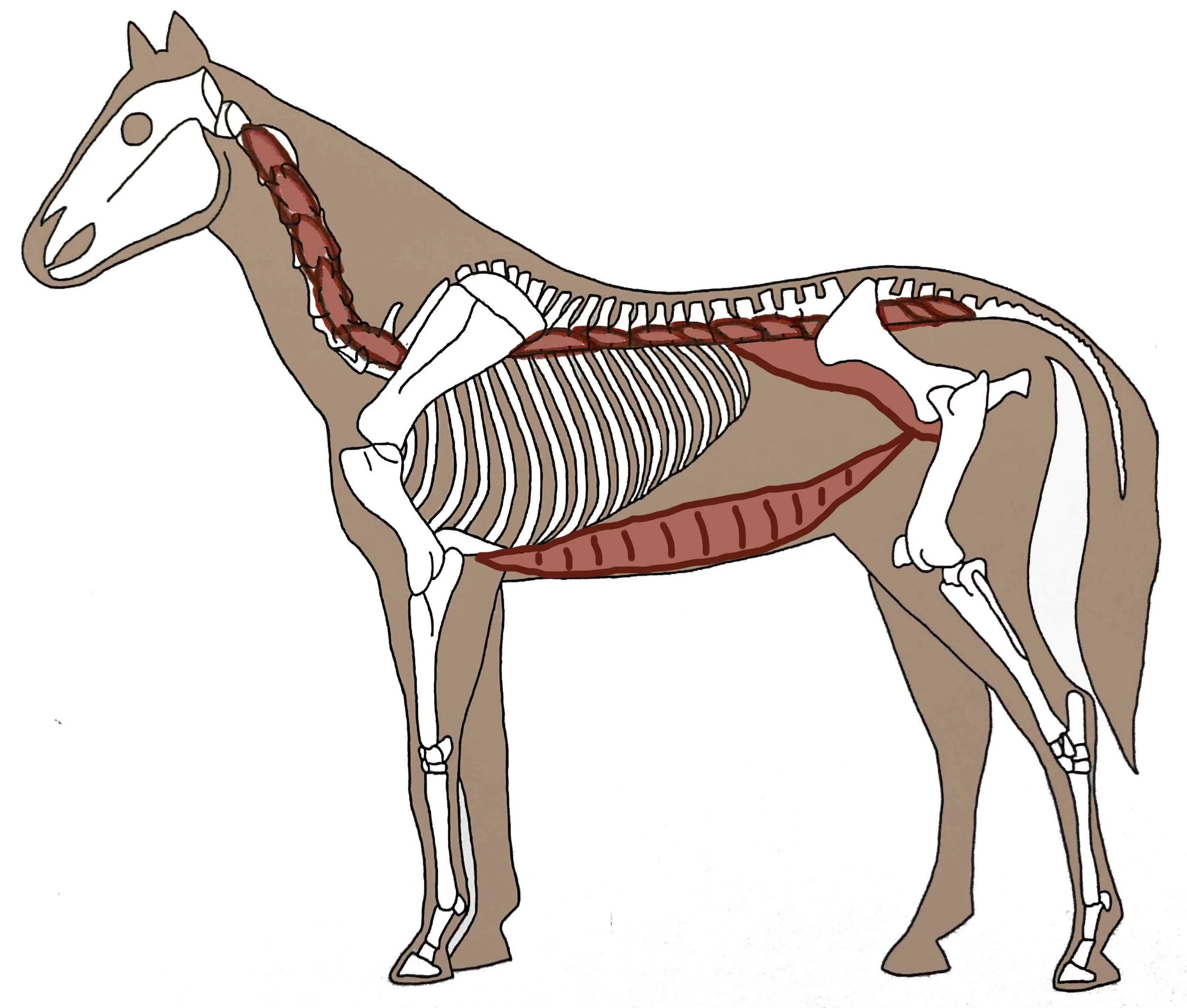Flexibility vs. Stability
Have you ever been told that your horse needs a flexible, bendy spine in order to perform all those amazing athletic feats that we ask our horses to do? Or have you ever been told that your horse needs to have a strong core in order to stabilize the spine and protect the spinal cord? So, which is it? Do we want a flexible or a stable spine? The answer is: both!
The range of motion between individual vertebrae of the horse's spine is small, making his spine much more rigid than say, a cat's (incidentally, this is one of the main reasons why it is possible for us to ride horses and not cats). But when each intervertebral joint chips in its range of motion the entire spine has a significant range of motion. If we want the back to stay healthy and functional, every intervertebral joint has to have a full range of motion, but no more than that. Excessive range of motion leads to trouble, as it can become damaging to the vertebrae, the soft tissue around it and the spinal nerves coming out of the spinal cord. This is where the muscles stabilizing the spine come in. They are small, deep muscles spanning two, three or four vertebrae and their job is to constantly be on the watch to prevent excessive movement. When a horse with a functional back is performing intricate dressage movements or jumping fences, the big superficial muscles move the spine through its range of motion and the small deep muscles prevent excessive movement between individual vertebrae.
If the muscles stabilizing the spines are weak and don't do their job properly, the superficial muscles and the connective tissue – fascia will try to take on the stabilizing role. The problem is the big superficial muscles aren't fine-tuned like the deep ones are, they are big and bulky and when they attempt to stabilize the spine they make it rigid. If this goes on for long enough fascia will come to the rescue as well. It will create adhesions (spots where the fascia of one muscle is stuck to the fascia of another muscle) and severely limit the range of motion of the spine. Now we have a rigid spine and poor athletic performance.
In order to restore healthy function of the back, we need to not only release the tight muscles and fascia of the back, but make those deep stabilizing muscles strong again! Our approach to battling back pain needs to be a three pronged one. First, we need to take away the pain, second, we need to release the tight tissues limiting the spine's range of motion and third, we need to strengthen those spinal stabilizers through core work!

